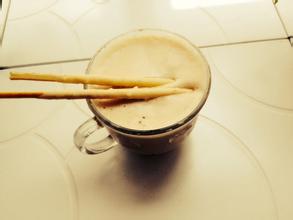Introduction to the method of describing the characteristics and Flavor of Coffee Bean washing in the Sun
Coffee bean solarization
Washed coffee accounts for 35% of exports. Good quality washed coffee is processed with freshly picked fully ripe fruit, picked carefully and closely monitored by professionals. The picked clean coffee beans are pulped on the day of picking, then fermented, washed, dried and peeled. The humidity of processed coffee beans is kept at about 12%. The washing rule has a good mellow taste, a high aroma and a lively sour taste.
Sun-cured coffee accounts for 65% of exports. Mainly picked by families, red coffee beans are placed on cement floors or on high tables to dry to about 11.5% humidity, then peeled and cleaned. Sun-dried beans have a complete natural mellow flavor, gentle aroma and more gum.
The sun treatment has a very high requirement on the climate, and if you encounter a rainy day in the sun, it will make the beans moist and moldy. When drying raw beans in the sun, the color is yellow, and the center will be brown after baking, rather than the white of washed beans. Sun beans have relatively better sweetness and mellow thickness, while less sour taste, but the quality is more unstable, there will be greater fluctuations. Due to the low cost of sun treatment, it is widely used not only in Ethiopia and Yemen, but also in Roboste coffee grown in Africa and Indonesia, which is a traditional primary processing method of coffee beans. at present, ancient coffee-growing countries such as Ethiopia and Yemen still almost all use the sun method to treat raw beans.
Sun treatment will first identify sunken beans in the sink, that is, ripe or half-ripe beans are spread in the drying farm for natural drying. The specific time depends on the local climatic conditions, which usually takes two to four weeks. When the moisture of the coffee bean is reduced to 12%, then use the sheller to grind off the hard pulp and silver skin.
The so-called honey treatment (Miel Process in Spanish) is said to refer to the process of making raw beans by sun-drying with mucous membranes. After the outer pulp of the coffee bean is removed, there will be a layer of sticky jelly. The traditional method of washing is to wash it off with clean water, but because of the limitation of water resources in some high-altitude areas, there is this way of direct drying.
The honey treatment process is vulnerable to pollution and mildew, so it needs to be closely watched throughout the process, constantly turning, and speeding up drying, so as to avoid bad fermentation flavor. Its advantage is that it can best preserve the original sweet flavor of coffee ripe fruit, making the coffee show elegant black sugar flavor and drupe flavor, while the berry flavor also supports the basic aroma of red wine, which is considered to be a very elegant product. The popularity of honey-treated coffee beans is largely due to their sweet and thick characteristics, which are very suitable for Espresso production in cafes. In recent years, more and more coffee beans are called "Miel Process", and they have also become a favorite material for international coffee contestants.

Important Notice :
前街咖啡 FrontStreet Coffee has moved to new addredd:
FrontStreet Coffee Address: 315,Donghua East Road,GuangZhou
Tel:020 38364473
- Prev

Introduction to the treatment methods of different varieties of coffee bean red honey
Introduction to the treatment of coffee beans generally speaking, washed coffee beans are bluish green. Due to layers of screening, the beans look very beautiful and have a clear and bright sour taste. Guatemala, Colombia, Blue Mountains, Kona, Kenya, Java and Panama coffee beans are all washed beans. Washing is used in Latin America with the exception of Brazil. Many boutique coffee beans will choose this treatment. But...
- Next

Introduction to the quality and taste of half-sun washing honey treatment of coffee beans
Coffee beans introduce the sun drying method because of the use of natural sunlight to dry coffee fruits and raw beans, so it is also called natural drying method. Due to the use of artificial and natural treatment methods in the process, the sun-cured beans look irregular and unflattering in appearance. 1. Choose beans: put the harvested fruit in the water tank, and the ripe fruit will sink, unripe and overripe.
Related
- Guji coffee producing area of Guji, Ethiopia: Humbela, Shakiso, Wulaga
- What is the most expensive variety of Qiloso in BOP multi-variety group?
- How to store the coffee beans bought home?
- Why are Yemeni coffee beans so rare now?
- Ethiopian Sidamo all Red Fruit Sun Sun Santa Vini Coffee beans
- SOE is mostly sour? What does it mean? Is it a single bean? what's the difference between it and Italian blending?
- Is Italian coffee beans suitable for making hand-brewed coffee?
- How to choose coffee beans when making cold coffee? What kind of coffee beans are suitable for making cold coffee?
- Just entered the pit to make coffee, what kind of coffee beans should be chosen?
- Can only Japan buy real Blue Mountain Coffee? What are authentic Jamaican Blue Mountain coffee beans?

